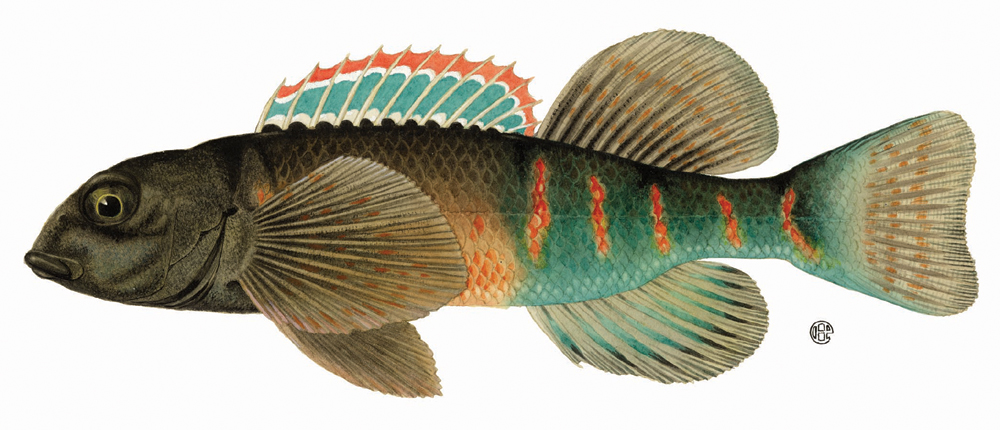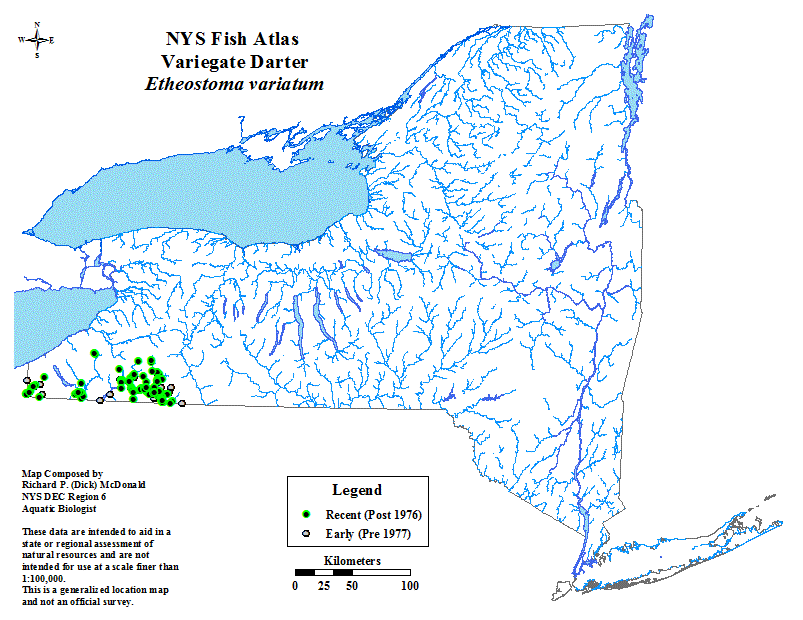
Variegate Darter (Etheostoma variatum)
The variegate darter is restricted to the Ohio River drainage, from southern Indiana, Kentucky, and West Virginia to the Allegheny system in western Pennsylvania and New York.
The variegate darter is a fish of moderate-sized streams. In the winter, it occurs in deeper pools and in the spring it moves into riffle areas to spawn.
It was found that during the colder parts of the year, when the water temperatures were below 35 F, the variegate darters moved into deeper pools. As the water warmed in late February, March, and April, the fish became sexually active, the males at about 40 F and the females at 50 F.
Spawning took place in the upper parts of riffles, usually by larger rocks. In the laboratory, the males defended territories against other males and established dominance hierarchies. When a female was ready to spawn, she moved into the males' territories, swimming in short bursts, sometimes moving up in the water column to the surface. The males then followed the female who moved into an area with a sandy bottom and burrowed her head and the front of her body into the sand. The male then moved over her and clasped her with his pelvic fins anterior to her dorsal fin. The female then vibrated for up to 30 seconds. The pair then separated and the female moved away, returning later to spawn again. One female was observed to spawn four times in 2.5 hours. At each spawning, the female released 20 to 40 eggs, sometimes as many as 70. Females of age 2and 3 contained 70 to 100 eggs. The eggs hatched in 13 or 14 days when they were kept at 50 to 60 F for the first 10 days and at 70 F for the last 3 or 4 days.
In Ohio, only midge larvae were found in six specimens that were examined.
Distribution of variegate darter in NY state.
An image of the variegate darter is also available for download.
The above species description and all pictures of this fish were taken out of "The Inland Fishes of New York State" by C. Lavett Smith, published by the New York State Department of Environmental Conservation, 1985.
